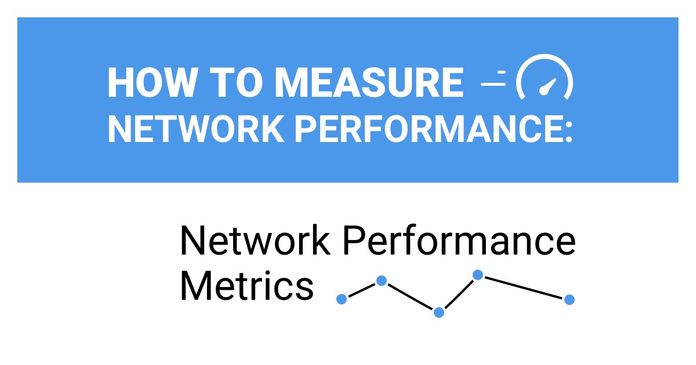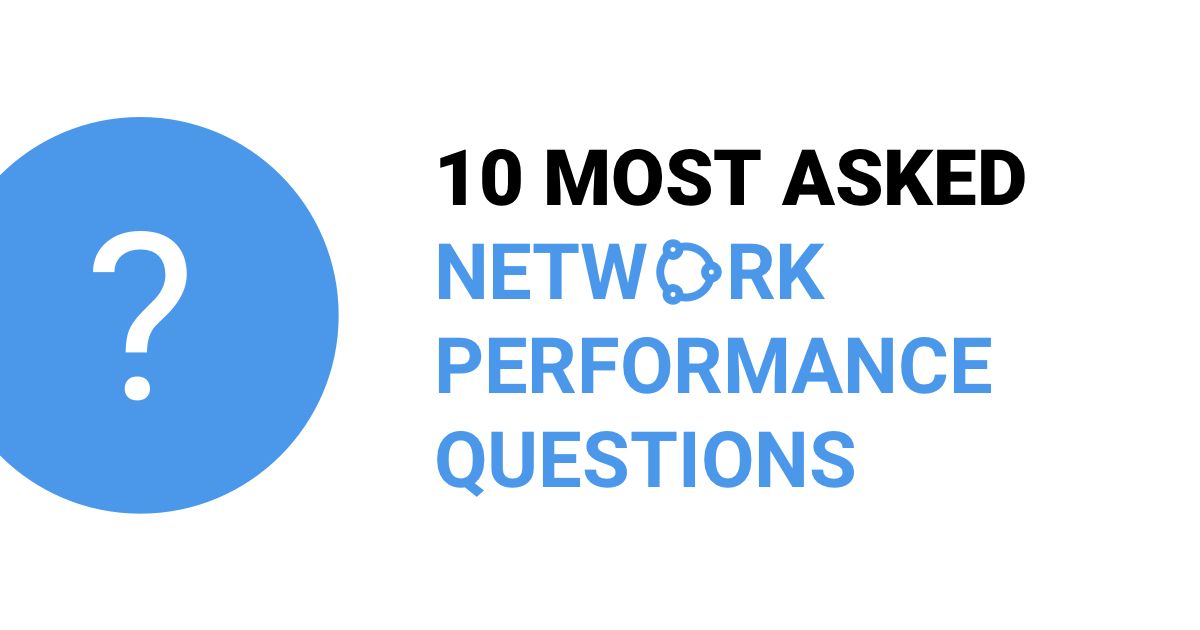Table of Contents
Table of Contents
Real User Experience Monitoring (RUM) is a critical practice, enabling organizations to ensure optimal user experiences across their network environments.
By monitoring and analyzing the network experience of real users, businesses can proactively identify and address performance issues, optimize network resources, and ultimately deliver exceptional service to their customers.
In the realm of network monitoring, it is essential to distinguish between two primary user groups: customers and employees. RUNEM specifically focuses on the network experience of customers, who interact with a company's digital services, websites, or applications.
It provides insights into how customers perceive and interact with these digital touchpoints, enabling organizations to better understand their needs and improve the overall user experience.

RUNEM goes beyond traditional network monitoring approaches that primarily focus on internal infrastructure and employee experience. While employee network monitoring remains important for ensuring operational efficiency and productivity, RUNEM shines a spotlight on the experiences of external users who directly impact a business's success.
By acknowledging and differentiating between customer experience monitoring and employee network monitoring, organizations can prioritize investments and resources to cater to the specific needs of their user base, enhance customer satisfaction, and drive business growth.
Whether customers are accessing a website, using a mobile app, or engaging with an online service, they demand fast loading times, responsiveness, and reliability. Any network or application performance issues can lead to frustration, abandonment, and ultimately, lost revenue for businesses.
Real User Network Experience Monitoring plays a vital role in addressing these challenges by providing organizations with real-time visibility into the actual experiences of their customers. It allows businesses to capture valuable data on network performance, application responsiveness, and user interactions. This data can be used to identify bottlenecks, diagnose issues, and optimize network resources to ensure optimal user experiences.
By prioritizing user experience monitoring, organizations can gain a competitive edge by delivering superior digital experiences, building customer loyalty, and maximizing customer lifetime value.
In the upcoming sections of this article, we will delve deeper into the components of RUNEM, explore key metrics and measurements to consider, discuss best practices for implementation, and examine future trends and innovations shaping the field.
Stay tuned as we demystify Real User Network Experience Monitoring and equip you with the knowledge and insights needed to harness its power effectively.
To grasp the significance of Real User Network Experience Monitoring (RUNEM), it's essential to have a clear understanding of user experience monitoring as a whole.
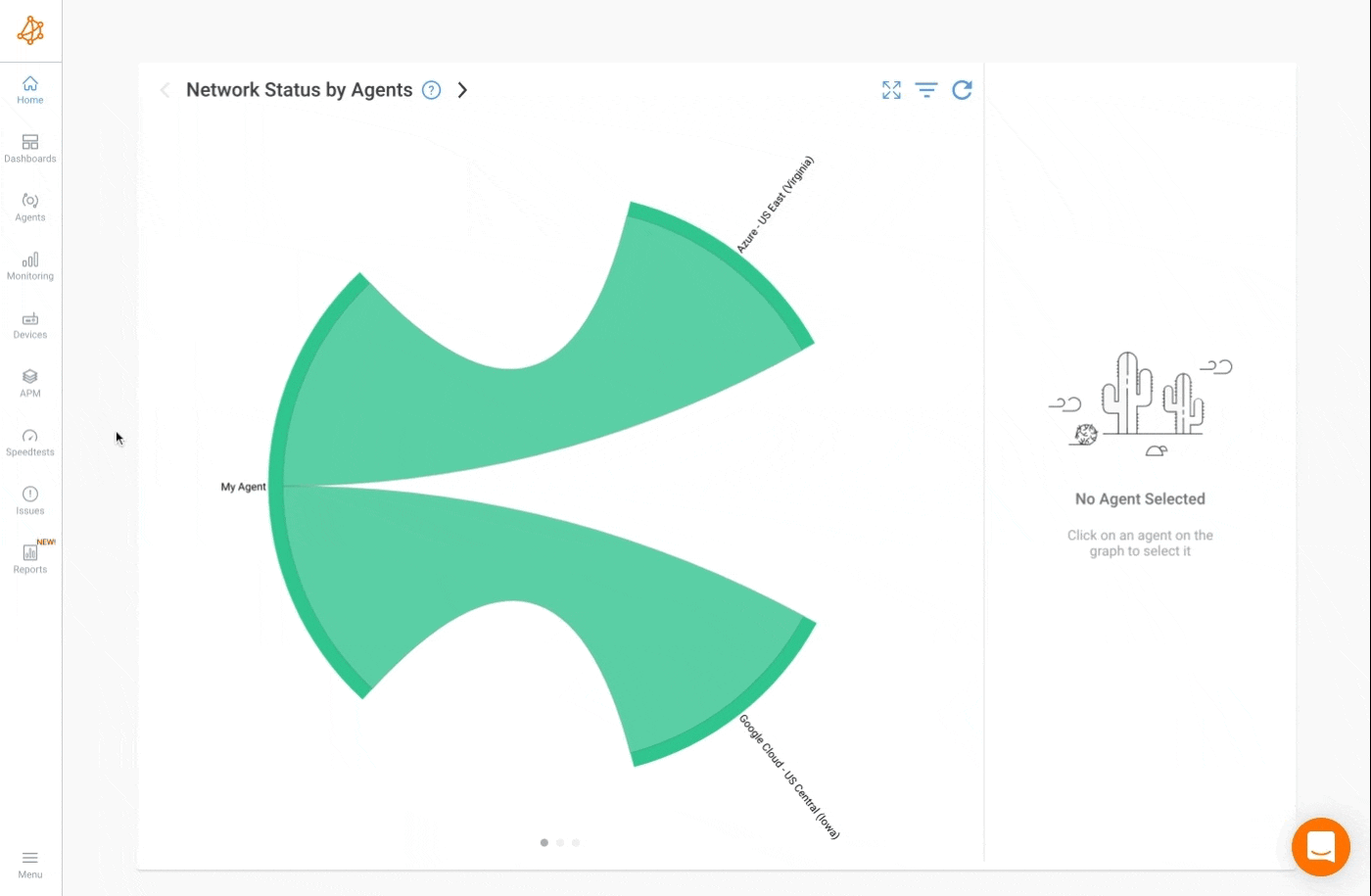
User experience monitoring focuses on capturing and analyzing the interactions and perceptions of users as they navigate through digital touchpoints such as websites, applications, or services.
User experience monitoring encompasses a range of techniques and tools used to assess the quality of user experiences in real-time or near real-time. It provides organizations with valuable insights into how users interact with their digital assets, including aspects like performance, usability, and functionality.
Monitoring user experience involves collecting and analyzing data on various parameters, such as response times, page load speeds, error rates, and user interactions.
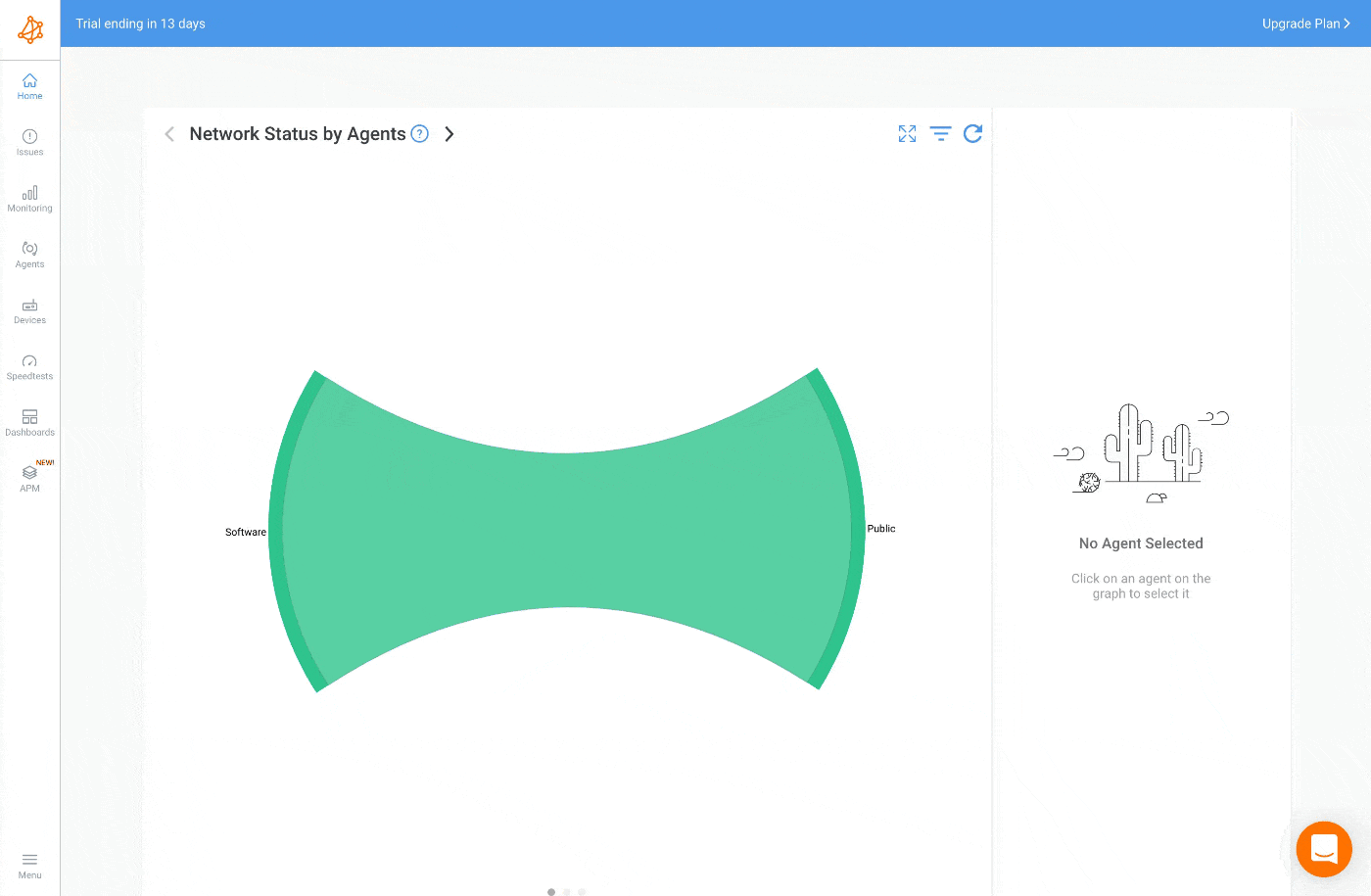
This data helps organizations gain visibility into the performance and usability of their digital platforms from the perspective of the end user.
By employing user experience monitoring, organizations can detect issues and bottlenecks that impact user satisfaction, identify opportunities for improvement, and optimize their digital offerings accordingly.
Two primary approaches are commonly used in user experience monitoring: synthetic monitoring and real user monitoring (RUM). While both approaches serve the purpose of understanding user experiences, they differ in their methodologies and focus.
Synthetic Monitoring involves simulating user interactions by using predefined scripts or bots to mimic specific user journeys. These synthetic transactions run at scheduled intervals from various locations and provide consistent, controlled measurements of network performance and network availability.
Learn how to use synthetic monitoring to monitor network performance & identify network issues, and the benefits of synthetic traffic over packet capture.
Learn more

Synthetic monitoring helps organizations proactively identify and address potential issues before real users encounter them.
On the other hand, Real User Monitoring (RUM) captures actual user interactions and experiences in real-time. It collects data from real users as they navigate through the digital environment, providing insights into the actual performance and user behavior.
RUM allows organizations to understand the impact of real-world factors, such as network conditions, device types, and user demographics, on the user experience.
Both synthetic monitoring and RUM have their unique advantages and use cases. Synthetic monitoring helps in measuring and validating performance under controlled conditions, while RUM offers insights into real-world user experiences across various scenarios.
Real User Network Experience Monitoring brings several benefits to organizations seeking to optimize their network environments and improve user satisfaction:
- Accurate Reflection of User Experience: RUM captures real user interactions and experiences, providing an accurate reflection of how users perceive and interact with digital platforms.
- Identification of Performance Bottlenecks: By monitoring actual user experiences, organizations can identify performance bottlenecks, such as slow page load times or high latency, and take proactive measures to address them.
- Enhanced Troubleshooting and Diagnostics: RUM data provides valuable insights into the root causes of performance issues, enabling IT teams to troubleshoot and diagnose problems more effectively.
- Optimization of Network Resources: By analyzing RUM data, organizations can optimize network resources and infrastructure to ensure smooth and efficient user experiences. Residential proxy by NetNut assists in gathering accurate user data from diverse locations to enhance monitoring accuracy.
- Improved User Satisfaction and Retention: Real-time monitoring and prompt issue resolution lead to enhanced customer satisfaction, which, in turn, contributes to higher customer retention rates and increased loyalty.
- Data-Driven Decision Making: RUM data serves as a valuable source of information for data-driven decision making, enabling organizations to prioritize improvements based on actual user needs and preferences.
In the next section, we will explore the components involved in Real User Network Experience Monitoring, including network performance monitoring tools, application performance monitoring tools, user behavior analytics, and data collection techniques.
Real User Network Experience Monitoring (RUNEM) involves various components and tools that work together to capture and analyze the network experience of real users. Let's explore the key components involved in implementing RUNEM effectively:
Network performance monitoring tools are essential for measuring and analyzing the performance of network infrastructure, including routers, switches, firewalls, and other network devices. These tools provide insights into network traffic, bandwidth utilization, latency, packet loss, and other network-related metrics.
Network performance monitoring tools enable organizations to identify bottlenecks, troubleshoot network issues, and ensure the overall health and efficiency of the network infrastructure. By integrating these tools with RUNEM practices, organizations can gain a comprehensive view of the network's impact on user experience.
Application performance monitoring (APM) tools focus on monitoring and analyzing the performance of software applications and services. These tools collect data on application response times, transaction throughput, resource utilization, and other application-specific metrics.
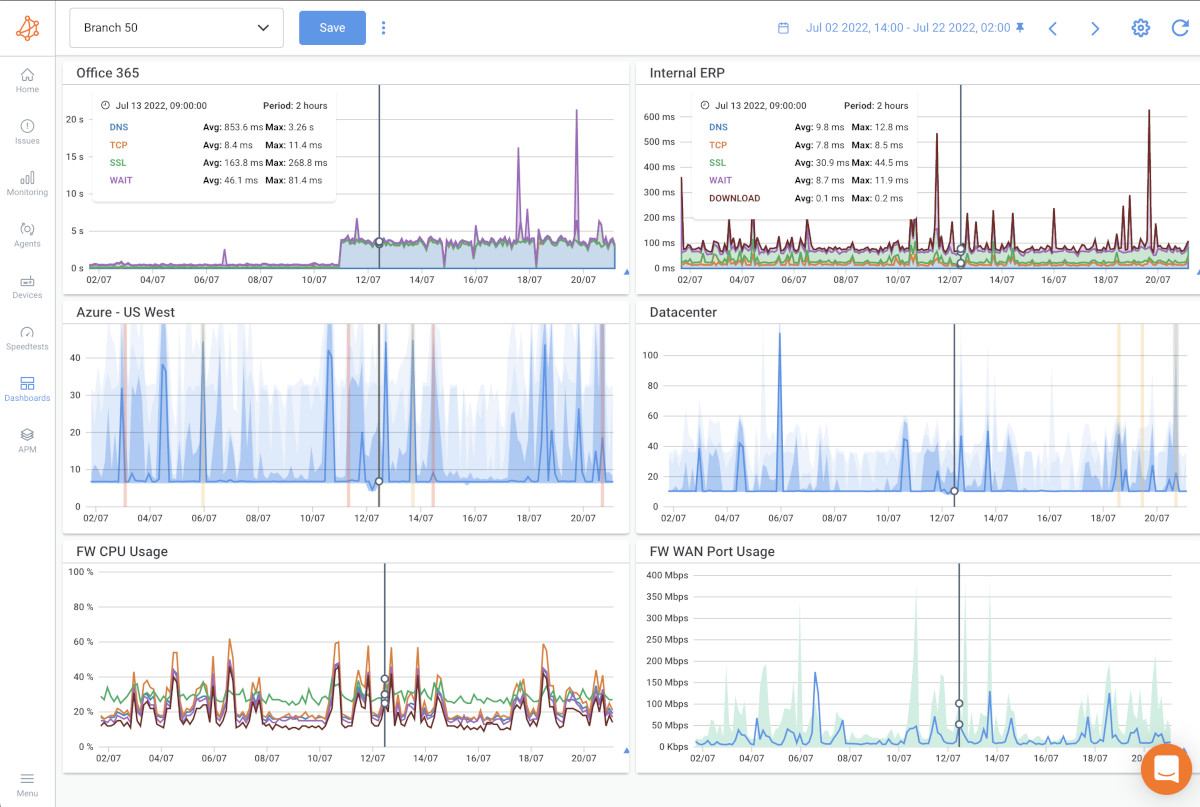
APM tools help organizations identify performance issues within their applications, such as slow database queries, inefficient code, or resource constraints. By combining APM with RUNEM, organizations can gain insights into how application performance affects the network experience of real users.
User behavior analytics (UBA) is an important component of RUNEM that focuses on understanding user interactions and behaviors within digital platforms. UBA tools collect and analyze data on user actions, such as page views, clicks, session durations, and conversion rates.
By applying advanced analytics techniques to UBA data, organizations can uncover valuable insights about user preferences, usage patterns, and engagement levels. This information helps in identifying areas for improvement, optimizing user journeys, and enhancing the overall user experience.
The data collection and analysis techniques used in RUNEM play a crucial role in capturing and processing the necessary information for monitoring user experiences. These techniques can include:
- Agent-Based Monitoring: Deploying software agents on user devices or within the network infrastructure to collect data on user interactions, network performance, and application behavior.
- Passive Monitoring: Collecting network traffic data passively without requiring any additional software or agents. This approach can provide insights into the actual network experience without interfering with user interactions.
- Data Aggregation and Correlation: Consolidating and correlating data from various monitoring sources, such as network devices, application servers, and user devices, to gain a comprehensive view of the user experience across different dimensions.
- Real-Time Analysis: Analyzing monitoring data in real-time or near real-time to identify performance issues, detect anomalies, and trigger network monitoring alerts for prompt issue resolution.
By leveraging these data collection and analysis techniques, organizations can obtain valuable insights into the network experience of real users and make informed decisions to optimize their digital services.
In the next section, we will explore key metrics and measurements that are essential for assessing user experience in network environments.
To effectively monitor and assess the user experience in network environments, it is crucial to focus on key metrics and measurements that provide valuable insights.
Learn how to measure network performance with key network metrics like throughput, latency, packet loss, jitter, packet reordering and more!
Learn more

Let's explore some essential metrics to consider when conducting Real User Network Experience Monitoring (RUNEM):
Response time and latency are fundamental metrics for evaluating user experience. Response time refers to the time it takes for a system or application to respond to a user's request. Latency, on the other hand, measures the time delay between a user's action and the corresponding response.
In this guide, learn how to troubleshoot and improve network latency with fun analogies, step-by-step instructions, and tips for both users and businesses.
Learn more

Monitoring response time and latency helps organizations understand how quickly their systems or applications are serving user requests. High response times or latency can lead to user frustration and impact overall user satisfaction.
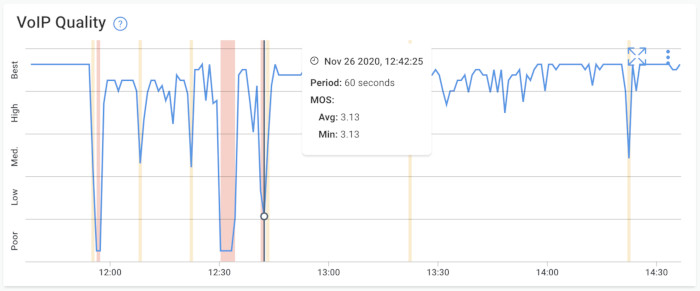
Throughput refers to the amount of data transmitted over a network within a given time period. It indicates the network's capacity to handle data traffic. Monitoring throughput helps organizations assess the network's performance in terms of data transfer capabilities.
Learn about the differences between network speed, bandwidth & throughput. Find out why your business should measure them and how!
Learn more

Bandwidth utilization, on the other hand, measures the percentage of available network bandwidth being utilized at any given time. Monitoring bandwidth utilization helps identify network congestion or potential network capacity issues that can affect the user experience.
Monitoring error rates and error types provides insights into the occurrence of errors or failures within the network or application environment. Error rates can include HTTP errors, DNS errors, database errors, or any other type of error specific to the digital platform.
By tracking error rates and types, organizations can identify areas of improvement, troubleshoot issues, and optimize their systems to reduce errors and enhance the user experience.
Packet loss refers to the percentage of data packets that do not reach their destination in network transmission. Jitter, on the other hand, measures the variation in delay between the transmission and reception of data packets.
How to measure packet loss with Obkio’s Network & Packet Loss Monitoring tool. Check for packet loss in your network & read packet loss measurements.
Learn more

Monitoring packet loss and jitter is crucial, especially for real-time applications such as video conferencing or voice calls. High packet loss or excessive jitter can lead to distorted audio or video quality, impacting the overall user experience.
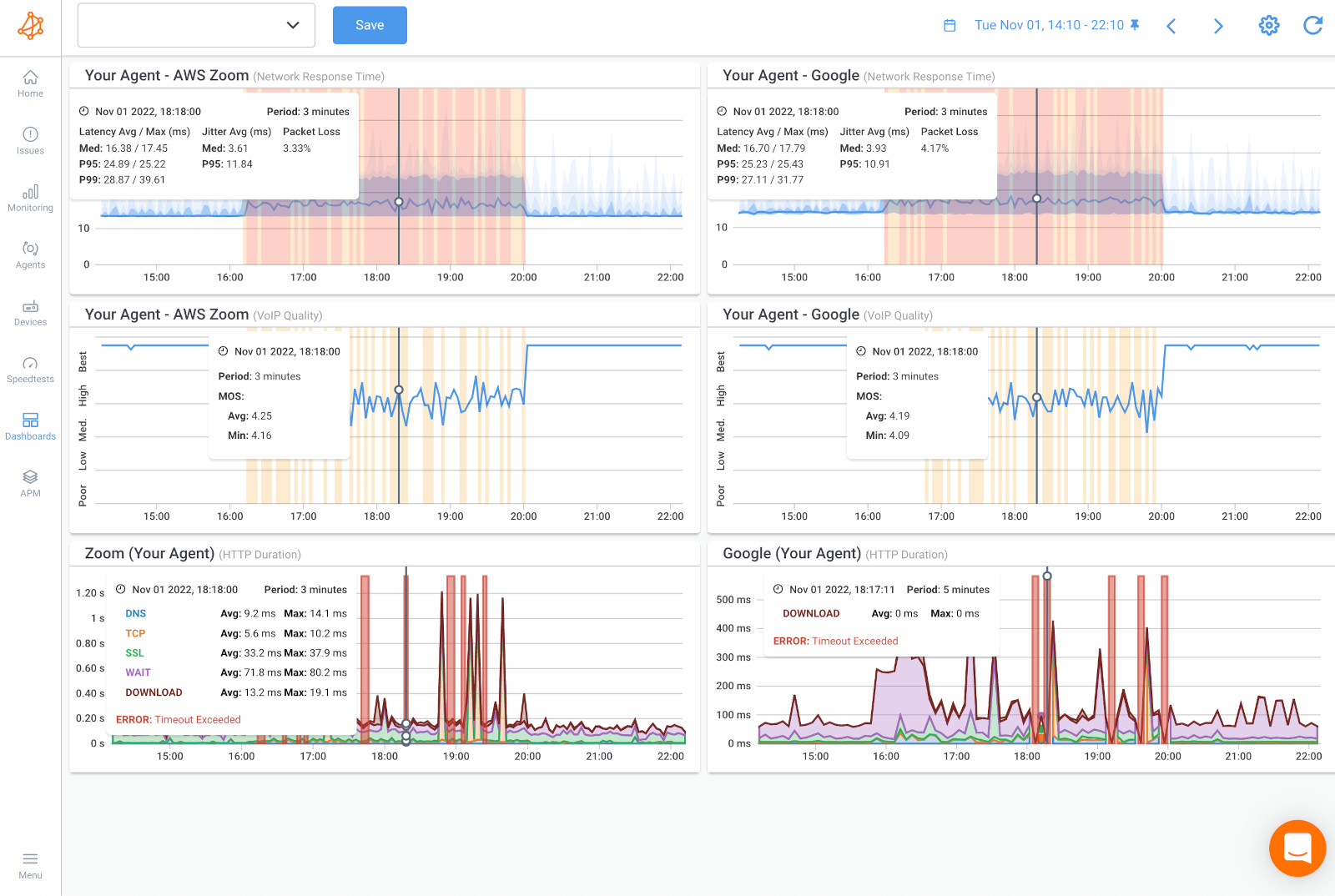
DNS (Domain Name System) resolution time measures the time it takes for a domain name to be translated into an IP address. Monitoring DNS resolution time helps identify potential issues in the domain name resolution process, which can impact website or application accessibility and responsiveness.
Implementing Real User Network Experience Monitoring (RUNEM) requires careful planning, strategic considerations, and the right tools and technologies. Let's explore key aspects to consider when deploying RUNEM within your organization:
Before implementing RUNEM, it's important to define clear objectives and goals for monitoring the network experience of real users. Consider the specific aspects of the user experience that are critical to your organization, such as response time, application performance, or transaction success rates.
Develop a comprehensive plan that outlines the scope of monitoring, target user segments or demographics, and the desired outcomes. This planning phase will help you align RUNEM with your organization's priorities and establish a framework for successful implementation.
Choosing the appropriate monitoring tools and technologies is crucial for effective RUNEM. Evaluate the available options based on your organization's requirements, scalability, ease of deployment, and compatibility with existing network infrastructure.

Consider tools that offer features such as real-time monitoring, data visualization, alerting mechanisms, and robust reporting capabilities. Look for solutions that provide comprehensive coverage of the key metrics and measurements discussed earlier, as well as the ability to integrate with other monitoring systems or platforms.
To measure the success of your RUNEM implementation, it's essential to establish clear monitoring objectives and define key performance indicators (KPIs). These objectives and KPIs should align with your organization's overall goals and priorities.
Here are a few examples of Internal Real User Network Monitoring Objectives and Key Performance Indicators (KPIs) along with their corresponding values:
- Objective: Improve Employee Productivity
- KPI: Average network response time for internal applications should be below 500 milliseconds.
- Target Value: Achieve an average network response time of 300 milliseconds or less, resulting in faster application performance and increased productivity for employees.
- Objective: Ensure Network Reliability and Uptime
- KPI: Network uptime should be maintained at 99.9% or higher.
- Target Value: Achieve a network uptime of 99.99%, minimizing disruptions and ensuring employees have uninterrupted access to critical systems and resources.
- Objective: Optimize Bandwidth Utilization
- KPI: Bandwidth utilization should be maintained below 80% during peak usage hours.
- Target Value: Maintain bandwidth utilization at 70% or lower, ensuring sufficient capacity for smooth data transmission and avoiding network congestion.
- Objective: Minimize Application Downtime
- KPI: Application downtime should be limited to less than 1 hour per month.
- Target Value: Achieve an application downtime of less than 30 minutes per month, reducing business interruptions and maximizing employee productivity.
- Objective: Improve Network Security
- KPI: Number of security incidents and breaches should be minimized.
- Target Value: Reduce the number of security incidents by 50% compared to the previous year, ensuring the network environment remains secure and protected from potential threats.
- Objective: Enhance Network Performance for Remote Workers
- KPI: Network latency for remote workers should be below 100 milliseconds.
- Target Value: Achieve network latency of 50 milliseconds or less for remote workers, providing a seamless and responsive network experience regardless of their location.
These examples demonstrate how internal real user network monitoring objectives and corresponding KPIs can be defined with specific target values to drive improvements in employee productivity, network reliability, bandwidth utilization, application uptime, network security, and remote worker experiences. Organizations can tailor these objectives and KPIs based on their unique needs and goals.
For example, your monitoring objectives might include reducing response time by a certain percentage, improving page load time, or minimizing error rates. Establishing specific and measurable KPIs allows you to track progress, identify areas for improvement, and demonstrate the value of RUNEM to stakeholders.
Integrating RUNEM with your existing network infrastructure and systems is crucial for seamless operation and data correlation. Ensure that your monitoring tools can integrate with your network devices, application servers, and other relevant components.
By integrating RUNEM with existing systems such as network performance monitoring tools or application performance monitoring tools, you can gain a comprehensive view of the network experience and correlate data from different sources. This integrated approach enables you to identify the root causes of issues and take proactive measures for optimization.
When implementing RUNEM, it's essential to prioritize data privacy and security. Ensure that any user data collected during monitoring is anonymized and protected in accordance with relevant data protection regulations and internal policies.
Implement secure data transmission protocols and access controls to safeguard sensitive user information. Regularly review and update your security practices to address emerging threats and vulnerabilities.
By addressing data privacy and security concerns, you can build trust with your users and demonstrate your commitment to protecting their personal information.
In the next section, we will explore best practices for Real User Network Experience Monitoring, including setting up proper monitoring configurations, establishing baselines, and analyzing monitoring data effectively.
To make the most of Real User Network Experience Monitoring (RUNEM), it's important to follow best practices that ensure effective implementation and utilization of monitoring data. Let's explore key network monitoring best practices for successful RUNEM:
Configure your monitoring tools to capture the relevant metrics and measurements aligned with your monitoring objectives. Define appropriate thresholds for each metric to determine acceptable performance levels and trigger alerts when thresholds are exceeded.

Consider factors such as time of day, user location, and user segment differences when setting up monitoring configurations. Tailor your configurations to reflect the specific characteristics of your user base and their expectations.
Establishing a performance baseline is crucial for meaningful analysis and identification of deviations in user experience. Capture and analyze data over a reasonable period to establish a baseline that represents typical performance levels.
By comparing ongoing monitoring data against the baseline, you can identify anomalies, patterns, and trends that require attention. This baseline-driven approach helps you quickly detect performance issues and take appropriate actions to maintain optimal user experiences.
Implement proactive alerting mechanisms that promptly notify relevant stakeholders when performance issues occur. Configure alerts based on predefined thresholds or anomalies to ensure timely identification and resolution of problems.
Integrate alerting systems with incident management processes to streamline issue resolution workflows. By leveraging proactive alerting and notification mechanisms, you can address performance issues proactively, minimize user impact, and maintain high-quality user experiences.
Collecting monitoring data is just the first step; effective analysis and interpretation are key to deriving actionable insights. Leverage data visualization tools and analytics capabilities to gain a clear understanding of performance trends, patterns, and correlations.
Regularly review monitoring data and generate comprehensive reports to communicate findings to stakeholders. Use the insights gained from data analysis to drive data-driven decision making, prioritize improvements, and optimize the network environment to deliver superior user experiences.
RUNEM is an ongoing process that requires continuous evaluation and iterative improvement. Regularly review and update your monitoring configurations, thresholds, and KPIs based on evolving user needs and changing network conditions.
Seek feedback from users and stakeholders to gain insights into their experiences and expectations. Use this feedback to refine your monitoring approach and prioritize enhancements that directly impact user satisfaction and business outcomes.
By embracing continuous evaluation and iterative improvement, you can continuously enhance your RUNEM practices and stay aligned with the evolving needs of your users and network environment.
In the next section, we will explore real-world use cases and success stories of organizations that have benefited from Real User Network Experience Monitoring.
While Real User Network Experience Monitoring (RUNEM) offers valuable insights into user experiences, organizations may encounter certain challenges and pitfalls during implementation and management. Let's explore some common challenges and strategies to overcome them:
As organizations grow and their user base expands, scalability becomes a critical factor in effective RUNEM. Monitoring a large number of users across multiple locations can pose challenges in terms of data collection, storage, and analysis.
To overcome scalability issues, consider leveraging cloud-based monitoring solutions that offer elastic scalability. Cloud platforms can handle the increasing volume of monitoring data and provide the necessary resources to support a growing user base.
Additionally, simplify the monitoring architecture by adopting centralized management and data aggregation approaches. This helps streamline operations and reduces the complexity associated with managing multiple monitoring systems.
One challenge in RUNEM is dealing with false positives and false negatives in monitoring results. False positives occur when alerts are triggered for non-critical issues, leading to alert fatigue and reduced responsiveness. False negatives, on the other hand, happen when actual performance issues go undetected, resulting in a negative impact on user experiences.
To address false positives, fine-tune monitoring configurations and thresholds based on the specific characteristics of your applications and user base. Regularly review and update these configurations as performance patterns and user behaviors evolve.
To mitigate false negatives, adopt a multi-faceted monitoring approach that combines various monitoring techniques. This can include both synthetic monitoring and real user monitoring, allowing you to capture a comprehensive view of the network experience. By cross-referencing data from different monitoring sources, you can reduce the chances of missing critical performance issues.
RUNEM involves collecting and analyzing user data, which raises concerns about data privacy and compliance with regulations such as GDPR or CCPA. Organizations must ensure that user data is anonymized, protected, and handled in accordance with relevant data protection laws and regulations.
Implement robust data protection measures such as encryption, access controls, and data retention policies. Regularly assess and update your data privacy practices to align with evolving regulations and industry standards. Transparently communicate your data privacy policies to users, assuring them that their personal information is handled securely.
Effective implementation and management of RUNEM require skilled personnel with expertise in network monitoring, data analysis, and performance optimization. However, finding individuals with the right skill set can be a challenge.
Invest in training and upskilling your IT teams to enhance their knowledge and capabilities in RUNEM practices. Encourage cross-functional collaboration between network operations, application development, and user experience teams to leverage their collective expertise.
Consider partnering with managed service providers or consultants who specialize in network monitoring and user experience management. They can provide the necessary expertise and support to ensure successful RUNEM implementation and management.
By proactively addressing these challenges and pitfalls, organizations can maximize the benefits of RUNEM and deliver exceptional user experiences consistently.
In the next section, we will explore future trends and innovations shaping the field of Real User Network Experience Monitoring.
Real User Network Experience Monitoring (RUNEM) continues to evolve as technology advances and user expectations evolve. Let's explore some future trends and innovations that are shaping the field of RUNEM:
Machine learning (ML) and artificial intelligence (AI) are revolutionizing RUNEM by enabling more intelligent and automated monitoring practices. ML algorithms can analyze vast amounts of monitoring data to identify patterns, anomalies, and performance trends.
With ML and AI, organizations can leverage predictive analytics to anticipate and prevent performance issues before they occur. These technologies can automatically adjust monitoring configurations, detect emerging patterns, and provide recommendations for network optimization.
Automation is playing a significant role in RUNEM, allowing organizations to streamline monitoring processes and reduce manual effort. By automating tasks such as data collection, alerting, and reporting, IT teams can focus on analyzing insights and taking proactive measures.
Self-healing networks are another emerging trend that combines automation and RUNEM. These networks can automatically detect and resolve performance issues in real-time, minimizing the impact on user experiences. Self-healing networks leverage AI algorithms and network programmability to optimize network resources and ensure continuous service availability.
The rise of edge computing and IoT devices is changing the landscape of network experiences. With more devices connecting to networks, RUNEM needs to adapt to monitor and optimize the user experience at the edge.
Edge-focused monitoring solutions enable organizations to capture and analyze data closer to the source, reducing latency and enhancing real-time insights. This allows for more accurate and comprehensive monitoring of user experiences, particularly for applications or services that heavily rely on edge computing or IoT.
As user experiences become more personalized and tailored, RUNEM is shifting towards user-centric analytics. Organizations are focusing on capturing and analyzing user feedback, sentiment analysis, and user journey mapping to gain deeper insights into individual user experiences.
User-centric analytics allow organizations to understand the emotional aspects of user experiences, identify pain points, and deliver more personalized services. By combining quantitative data with qualitative user feedback, organizations can make data-driven decisions to improve the overall user experience.
RUNEM is increasingly integrated with DevOps and continuous delivery practices to ensure seamless user experiences throughout the software development lifecycle. By incorporating monitoring and feedback loops into the development and deployment process, organizations can detect and address performance issues earlier in the software development cycle.
Integrating RUNEM with DevOps enables continuous testing, monitoring, and optimization, resulting in faster time to market and higher-quality software products.
As technology continues to advance, organizations embracing these future trends and innovations in RUNEM will have a competitive advantage in delivering exceptional user experiences. By staying at the forefront of these developments, organizations can proactively optimize their networks, enhance user satisfaction, and drive business success.
In the concluding section, we will summarize the key takeaways and emphasize the importance of RUNEM.
Real User Network Experience Monitoring (RUNEM) plays a vital role in ensuring optimal user experiences in network environments. By monitoring and analyzing the network experience of real users, organizations can proactively identify performance issues, optimize network resources, and deliver exceptional services to their customers.
In this article, we demystified RUNEM by exploring its key components, metrics, and implementation best practices. We discussed the importance of distinguishing customer experience monitoring from employee network monitoring, and how RUNEM focuses on capturing the experiences of external users.
We explored the components of RUNEM, including network performance monitoring tools, application performance monitoring tools, user behavior analytics, and data collection techniques. These components work together to provide organizations with a comprehensive view of the network experience from the user's perspective.
Key metrics and measurements, such as response time, latency, throughput, and error rates, were examined as crucial indicators of user experience. Monitoring and optimizing these metrics enable organizations to enhance user satisfaction and retention.
We highlighted the importance of planning and strategizing for effective implementation, selecting the right monitoring tools and technologies, defining monitoring objectives and KPIs, and integrating RUNEM with existing network infrastructure and systems.
Best practices, including setting up proper monitoring configurations, establishing baselines, utilizing proactive alerting mechanisms, and analyzing monitoring data effectively, were discussed to maximize the value of RUNEM.

We explored real-world use cases and success stories, showcasing how organizations have benefited from RUNEM by enhancing conversion rates, resolving issues proactively, optimizing network performance, and improving user experiences across various industries.
We also addressed common challenges and pitfalls, such as scalability and complexity, false positives and negatives, data privacy and compliance, and the need for skilled personnel. By implementing strategies to overcome these challenges, organizations can ensure the success of their RUNEM initiatives.
Furthermore, we discussed future trends and innovations, including machine learning and AI-driven approaches, automation and self-healing networks, edge computing and IoT, user-centric analytics, and integration with DevOps and continuous delivery. Embracing these trends enables organizations to stay ahead in delivering exceptional user experiences.
In conclusion, Real User Network Experience Monitoring (RUNEM) is a powerful practice that enables organizations to understand and optimize the network experience of real users. By prioritizing user satisfaction, leveraging monitoring data, and embracing future trends, organizations can differentiate themselves in the digital landscape and drive business success.
We hope this article has provided you with a comprehensive understanding of RUNEM and equipped you with the knowledge and insights needed to harness its potential effectively.


























 Obkio Blog
Obkio Blog





